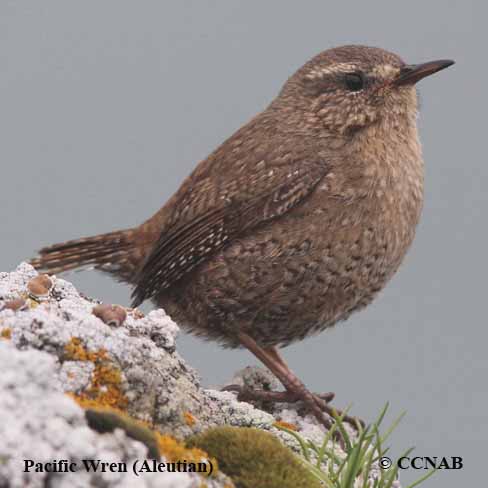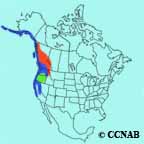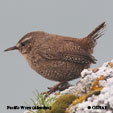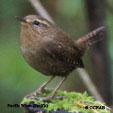North American Bird Search Box
This search box can be used to find bird species using bird's english, french or latin name, or to identify bird by its 4 letter Alpha Code
Field Guide for all the Birds of North America
Pacific Wren
4 Letter (english names) Alpha Code: PAWR (1)
Troglodyte de Baird
Troglodytes pacificus
Information, images and range maps on over 1,000 birds of North America, including sub-species, vagrants, introduced birds and possibilities

There are two races or sub-species of the Pacific Wren. Although, which is usually the case, races are seen or found in the same type of habitat. This is not the case with the Pacific Wren. The Pacific Wren (Aleutian) is found on the open and barren landscapes of the Aleutian Islands and on the Pribilof Islands, which are both situated in the Bering Sea. It is usually found in the rocky outcropping along the coast. This is a large wren and is the largest in its group and it does not migrate. Then, there is the Pacific Wren (Pacific), that is seen along the southern regions of Alaska, southward and right into the southern regions of California. This race is seen mostly in the forests and it is usually observed on the forest floors. It may move into the interiors during the winter months.
North American Birds Videos
- Click here - Collecting materials for a nest
North American Bird Calls
- Click here
- Click here
- Summer
- Year Around
- Winter

The Pacific Wren was once part of the Winter Wren group. Now it is its own species with sub-species within its group. In general, but it is not always the case, it is seen on the western side of the Rocky Mountains. It moves further into the British Columbia rockies in breeding season.
Reference to Other Bird Site:
ABA - American Birding Association This site represents an organization that maintains official records of all birds species that have been proven to have been seen inside the perimeters of the North American Continent and the surrounding bodies of water. Regular revised versions are posted to keep the bird list current at all times. This is the list used by all serious birders over their lifetime. You may be aware of the movie called the "Big Year". It was with this list that all the competing birders used in an attempt to set a new record as to how many bird species that could be seen by an individual birder in one calendar year.

